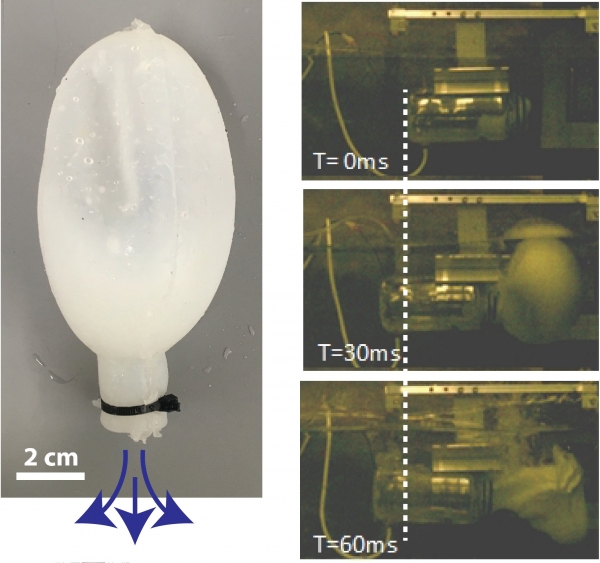A major result from our study is that electrolysis from a fuel cell consuming 1 W can produce enough fuel and oxidant for significant combustion powered hydrojetting. Furthermore, the rapid deflagration of hydrogen was capable of propelling a synthetic mantle. The figure below shows the concept for combustion powered hydrojetting in the robotic lamprey and a prototype of the hydrojetting mantle. The hydrojetting chamber is modeled after the mantle of an octopus, which squeezes water into a jet that propels it backwards. By fixing a deformable, synthetic mantle on the interior of our combustion chamber, the ignition of combustible fuel causes the mantle to deform and squeeze out water, causing propulsion.

In the figure, right column shows high speed camera footage of the hydrojetting system moving at a speed of 3 m s-1, fully submerged under water. This is remarkable for many reasons, one is that the mantle was actually fixed in place to measure the force exerted. The thrust force generated was enough to dislodge it from its fixture.
